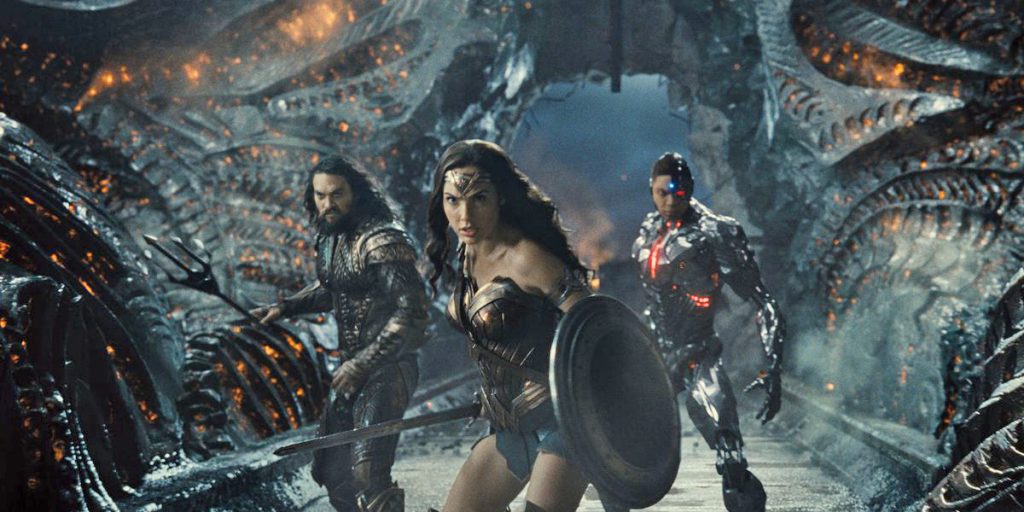Zack Snyder’s Justice League: The Snyder Cut has arrived and left us with disappointment as the story continues to miss the essence of its characters.
As Zack Snyder’s Justice League has been divided into 7 chapters, I thought following Snyder’s episodic structure would be the best way to approach a discussion of the reasons why the film is such a disappointment. “The Snyder Cut” arises from a confluence of urban legend and savvy opportunism by Warner Bros. The original Justice League was released in 2018 to much critical derision. Behind-the-scenes, Joss Whedon was brought in to assist in re-writes and in shepherding the movie home after his success with Marvel’s The Avengers and Avengers: Age of Ultron. While the timelines get a bit squidgy, it seems clear Whedon was in essence co-directing the film when Snyder quit the project in the wake of a family tragedy. Emboldened, for reasons that escape me, by Snyder’s two previous DC superhero movies, Man of Steel and Batman v Superman: Dawn of Justice, Snyder fans soon began call for the release of the fabled Snyder Cut of Justice League. Inspired by throwaway interview quotes and trailer footage unseen in the final product, devout fans began bombarding the internet with calls to #ReleaseTheSnyderCut. AT&T, parent company of Warner Bros, saw a difficult streaming market for its crown jewel HBO Max and, with the pandemic curtailing new production, saw an investment in completing Snyder’s version of the film, and sating the fans, as a savvy way to build the brand.
L&C’s Zoe Rose Bryant will be back on Saturday to discuss his own 7 chapters of success.
There will be spoilers throughout.
CHAPTER 1: For this reason, above all, their capacity for good, I have sent them you… my only son.
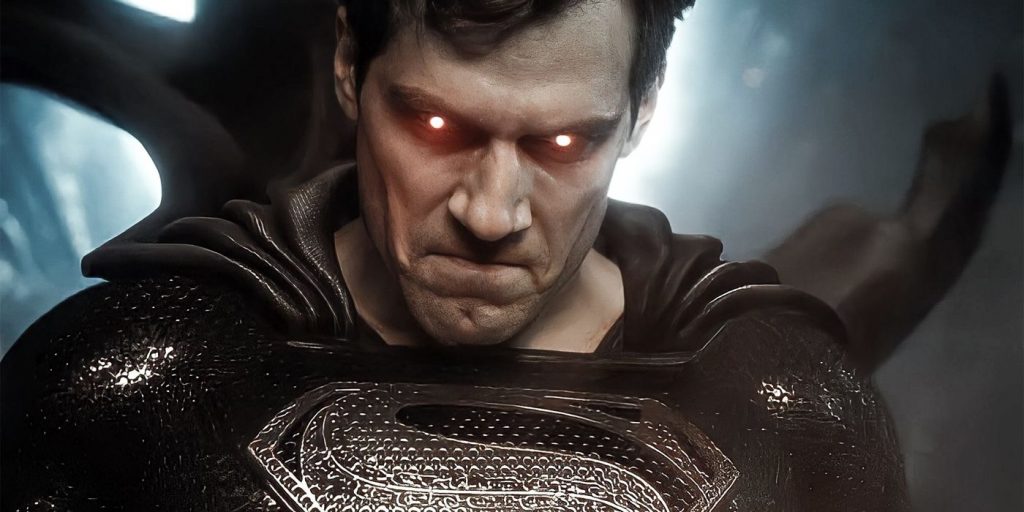
The same appeal I have always found in Superman has arisen in each major rendition of the character: from George Reeves to Christopher Reeve, from Tim Daly to Brandon Routh, each brought a profound sense of moral decency and kindness to the obvious Christ allegory. Predictably, I object deeply to Snyder’s take on Kal-El. The biggest problem with Snyder’s Man of Steel is crystallized less by Superman committing murder but more by our purported hero choosing to make out with Lois Lane in the 9/11-esque wreckage of Metropolis while thousands are quite literally in the process of dying in the city’s wreckage. It’s an unconscionable oversight that recasts a paragon of decency into a selfish impudent child let by the whims of anatomy and not by heart.
What Snyder proved in his epilogue, the thing he had to shoot to complete his vision, is that he sees Superman as having the internal potential to be an apocalyptic monster who causes Armageddon over the death of his girlfriend. That’s the storytelling of a 12 year old boy who says, “Wouldn’t it be cool if Superman turned heel?” and not an understanding of the character whose defining trait is an endlessly supply of goodness. Even the “Knightmare” story that serves as the (very) rough inspiration for that vision of the DCEU is predicated on a Superman who is forced to act against his own will by the maguffin, er… Anti-Life Equation. Superman is supposed to be, as Marlon Brando once helpfully in 1978’s Superman described, the “light to show the way” for humanity. Snyder reconstitutes him as a petulant child, more World War Hulk, raging id unleashed, than The Man of Tomorrow sent lead mankind into the future.
Snyder’s fundamental whiff on the Justice League’s most important character shows he has no interest in telling a story about these characters and is a huge element of the disappointment I feel in the film. I do not think slavish fidelity to the source material is necessary at all, but the essence of adaptation is capturing the core traits of a property and translating them to a new medium. If anything, Whedon – and there’s plenty of criticism to be leveled at his cut – seems to care far more about the real Man of Steel.
CHAPTER 2: Do I really look like a guy with a plan?
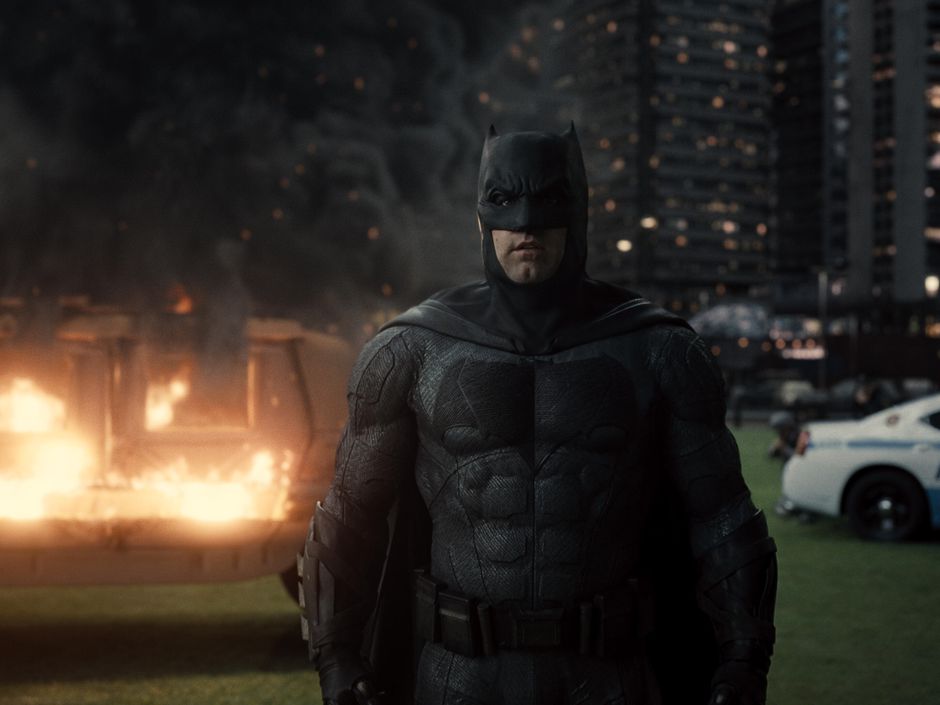
So, in Snyder’s version, when Superman is resurrected, it just so happens that Lois is at the Superman death memorial with a contrived cup of coffee to deliver an otherwise irrelevant neighborly police officer on guard duty. The gap between the end of the world and defeating Steppenwolf is reduced to Lois deciding to get a coffee one more time at exactly the right moment while Superman was being resurrected around the corner. By emphasizing random behavior by Lois, and visually the random cop, Snyder de-emphasizes the confusion and conflict in Cavill’s performance. I’m not doing a “Cinema Sins” thing here, to be clear: there’s an important thematic point. In the Whedon version, Batman has a plan to respond to Superman’s resurrection. Batman is – as one of his many comics is helpfully titled – the World’s Greatest Detective. He is, canonically, one of the smartest people on earth and one of the most cunning. In Whedon’s version of the DCEU, Batman puts his savvy to work by planning to have Lois there in case the resurrection goes awry. He was ready for this possibility and he was smart enough to know that the single thing most apt to mollify Superman is his love. The Snyder Cut Batman is operating on… bland, blind faith.
The entire Batman characterization is better in The Whedon Cut. A Bruce Wayne that is so obsessed and fixated on achieving his goal, here resurrecting Superman, that he doesn’t give a damn who he’ll alienate or what the consequences may be of his action is truer not just to the classical rendition of the character but to Snyder’s own characterization from Batman v Superman. Instead of a dopey dialogue scene where Bruce wonders why there was a strange Flash time portal moment in his last movie, he puts the lesson of the Flash’s time portal to use and makes sure to have Lois available in Whedon’s take. And that’s without even getting to the fact that Snyder simply does not know how to include Batman in the greater conflict in the film’s climax.
I love Gotham’s Dark Knight. I grew up on the gravelly tones of Kevin Conroy’s Batman. Batman reduced to Lost’s John Locke is not Batman at all. Batman is the ultimate Man of Science, and never the Man of Faith. If you want to turn him into the Man of Faith, you’ve got to earn it. And there’s fertile storytelling possibility in such a conversation. Yet, despite over four hours of running time, Snyder earns nothing that sells the conversion experience of the murderous Batman of Batman v. Superman who branded enemies so they’d face prison execution. The Bruce Wayne who spared Superman only through the grace of some lazy maternal naming by comic book writers in the 1930s need to earn his transition into some sort of newly genial figure. That Snyder fails to earn that conversion is yet another source of my disappointment in Zack Snyder’s Justice League.
CHAPTER 3: If you want boys to respect you, show them you’re serious. Shoot something, blow it up!
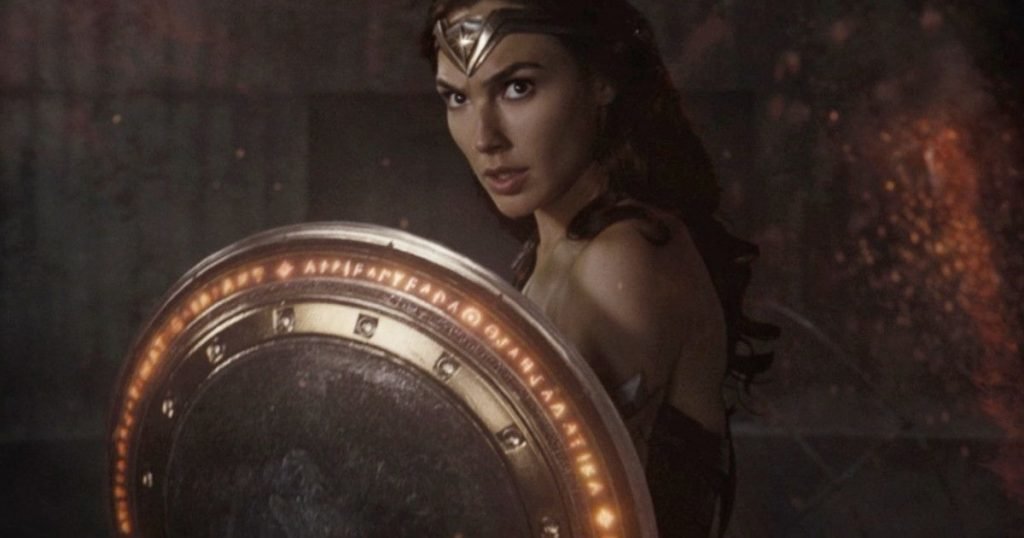
Zack Snyder has something he wants you to know. His Justice League is incredibly mythic and his heroes are descended, both thematically and literally, from the gods of old. Thankfully, the Lords of the Rings copyrights are also held at Warner Bros., because our heroes have been reconstituted as the rightful heirs to Frodo and his kin. It’s not the worst idea to see Atlanteans, Amazonians, normal men, and a random Green Lantern come together to have once thwarted Darkseid. In sequences ripped from The Fellowship of the Rings’ prologue, Snyder attempts to tie the mythic to the modern world. He even attempts to give this film’s maguffins – “mother boxes” which combine to form a “unity” – some sort of generational meaning like the One Ring.
I guess I understand the appeal, generally. Snyder wants to tell the story of gods and monsters in the biggest possible terms. In that sense, he’s, at least, going for it, here. Unfortunately, this reconstitution of DC mythos neither syncs with the characters in this film nor with what Snyder has done in his past films. Snyder isn’t telling a trilogy here – he’s telling a story of essentially Greek mythology restrained by the DC intellectual property.
Even in his version of this story, however, everything boils down to the most boring denominator: soulless CGI creations weightlessly smashing into one another. Whedon unsuccessfully added some Russian families to the final conflict to try to create human level stakes. Snyder has Cyborg’s deus ex machina powers attempting to hold the mother boxes apart while the Flash runs very fast. The rest of the league fights for awhile until the inevitable conclusion is reached. For all of his mythologizing and higher aspiration, four hours of storytelling is distilled down to the same climactic and largely irrelevant action that has defined blockbuster filmmaking for decades now.
It is in the film’s climactic arc that the disappointment of Snyder’s revision becomes most clear. The effects and craft on display here lack the grace and wonder of Snyder’s own oeuvre. His Watchmen action carries a visceral, violent charm. His 300 is truly the most mythic and testosterone-fueled version of a steroidal masculinity the screen has ever given us. The film is so masculine I suspect Michael Bay once watched that film and wondered why his own characters were so devoid of manly strength. It may not be the best aesthetic, but it is at least an aesthetic. The visual signature of a storyteller with a clear grasp on what sort of imagery he wants to depict. It is perhaps the most damning indictment of The Snyder Cut that the “auteur” is left feeling so derivative, his signature work indebted more to Peter Jackson and James Cameron than anything in his own directorial canon.
CHAPTER 4: And now I know, that only love can truly save the world. So I stay, I fight, and I give, for the world I know can be.
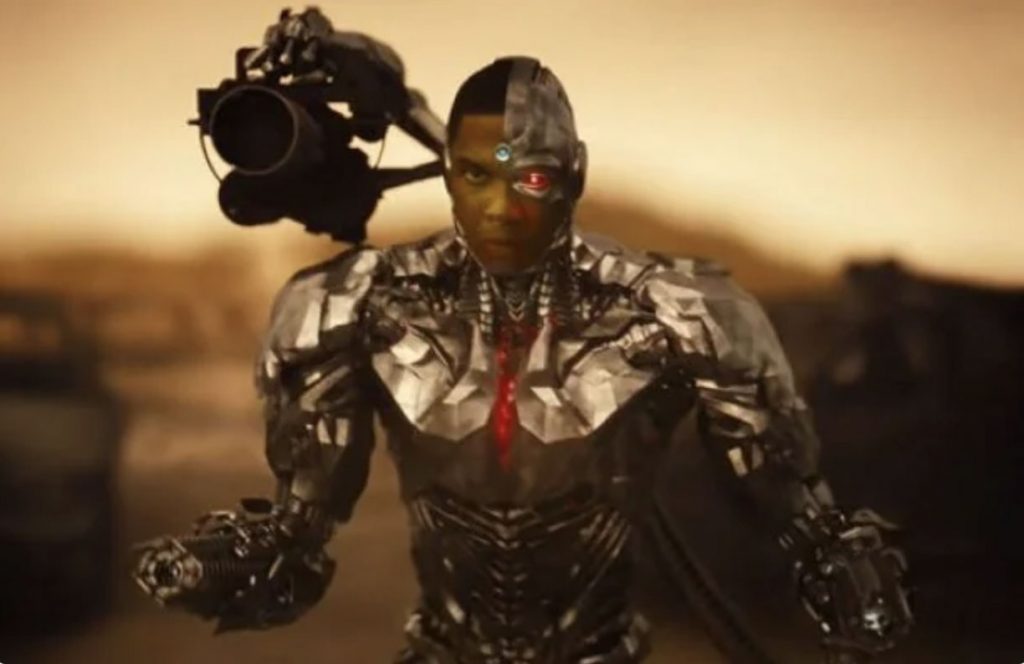
I’ve been so negative, but let’s talk positives!
Cyborg is now a fully realized character and not the tack-on piece he was left as in the Whedon version. I still think the character’s look is jarringly fake, and Fisher is somewhat overwhelmed by his digital makeup, but at least there is a real arc here. It’s especially nice to see the forever underrated Joe Morton (Terminator 2: Judgment Day) get a hell of a lot more screen time.
Aquaman and Flash get more to do than cameo. The introduction of Vulko (Willem Dafoe, The Florida Project) and increased role for Meera (Amber Heard, Never Back Down) serve to add a bit of cohesion to Aquaman and give Momoa’s general reluctance and eventual integration into the League a more clear story. While I think the Iris West scene – discussed in Chapter 5 below – is one of the film’s worst, I think Ezra Miller (The Perks of Being a Wallflower) does his best work in the scenes with his incarcerated dad played by Billy Crudup (Almost Famous). Crudup is wonderful in the part, and I’m saddened that he’ll be recast in the upcoming Flash film.
While I think technical, and special effects, limitations hold it back, I think the expansion of the narrative on Themysceria is a significant improvement. The Amazonians are given chance to show their acumen as true warriors in a way that makes a ton of sense for the characters. One particularly effective moment sees Connie Nielsen’s (Gladiator) Queen Hippolyta take a moment to mourn as so many of her brethren are swept into the sea. And, of course, Steppenwolf (Ciaran Hinds, HBO’s Rome) is given something resembling an actual arc.
The film is more coherent than Whedon’s theatrical cut While Snyder remains entirely too dedicated to contrivances dictating storytelling – for example, Diana seems to wait until after numerous folks have been murdered in a bank robbery before intervening just so we can get a nice hero shot of her overlooking London – but at the very least there’s an attempt to cast the mother boxes as anything more than lazy maguffins. But look the skill in making movies instead of miniseries is to give all of these things moments to breathe in theatrically palatable run times. So, clearly, there are fans happy to invest four hours into this, but as a general rule, a movie needs to be pretty special to get the masses to line up and watch at even a two and a half hour runtime.
CHAPTER 5: Dressed like a bat? I dig it!

Let’s talk about humor. Part of my objection to The Snyder Cut is that it’s full of moments of humor that simply are not funny. Whedon structures and edits in a way more conducive to comedy than Snyder. Identical lines – such as most of Ezra Miller’s quips – are funnier in The Whedon Cut because Whedon gives his comedy a bit more time to breathe and his actors a bit more time to express. Even the comedic beats that have been added to The Snyder Cut speak to Snyder’s ill-ease with good cheer. Snyder chose to add back a comedic scene with The Flash that sees him rescue an unnamed Iris West (Kiersey Clemons, Hearts Beat Loud) that plays entirely from laughs. Barry quite literally runs out of his shoes to save Iris before creepily stroking the hair out of her face and grabbing a flying hot dog out of mid-air. He immediately sprints back to the dog shelter where he had been applying for a job, with a doggie meat stick joke around the hot dog locked and loaded. It’s a dopey, unfunny sequence that wastes a lot of Miller’s comedic charm. It’s the sort of scene that I imagine most would – in a vacuum – assume came from Whedon.
I am quite at a loss for Snyder fans who feel these films are better when they are devoid of humor. Humor is not some sort of “weakness” that makes a film less serious. People are messy and flawed – humor serves as a common bond. One of the saddest movies I’ve seen – Manchester by the Sea – achieves its brilliance in large by how acerbic it can be. How deftly it recognizes that comedy is the natural counterbalance to tragedy. Snyder – as has been the case throughout his career – is at a loss for juggling tone that isn’t masculine and severe, even when he tries.
So Aquaman’s quote above – “Dressed like a bat? I dig it!” – comes from the very first Justice League trailer, the basis for much of the “Snyder Cut” hubbub. Snyder filmed that line. It just seems an interesting lens into the unreality of this project. Whedon is excoriated for unfunny comedy in his cut of Justice League… that was cobbled together from footage mostly filmed by Snyder.
CHAPTER 6: The world’s too big, mom.
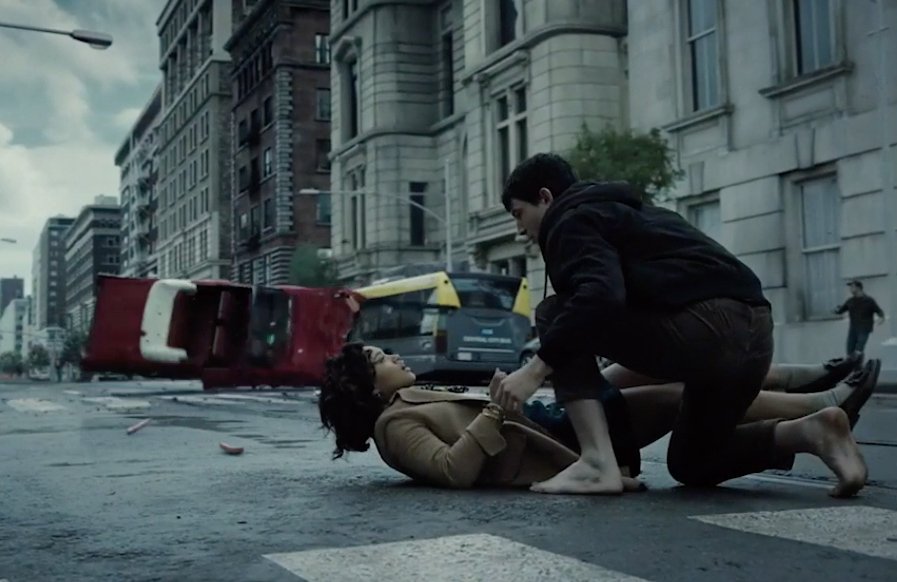
There are no rules – Academy Awards guidelines aside – defining what running time and structure encompasses a film. Some extremely long films are divided up episodically for ease construction: as wonderful as Fanny and Alexander is, a running time in excess of five hours is a difficult ask for all but the most attentive and steel bladdered audience member. Other films, Quentin Tarantino’s Inglourious Basterds comes to mind, use a “chapter” structure in what is an actual film. Zack Snyder has said in interviews that he intended The Snyder Cut to release in four parts, but that, as a practical matter, there were contractual difficulties which made that impossible.
For whatever reason, we are left with a “film” that lacks the cohesion endemic to a movie and a “TV show” with disparate chapters that don’t follow any logical episodic structure. The problem with Snyder’s approach is made most clear by the film’s seventh “chapter.” Without any sense of narrative cohesion at all, Snyder slaps together scene-after-scene of MCU-style stingers each setting up story thread after story thread that will never come to fruition. It has the feeling of watching a series of deleted scenes on a DVD.
The feel of a workprint cut permeates this thing. The special effects, clearly a priority for someone who films so little on location as Snyder, are genuinely execrable. Each “Snyder Cut” sequences has amateurish CGI unreflective of modern evolutions of the technology or even baseline cogency in compositing and composition. Many of them have that straight-to-video sheen of scenes filmed purely on green screen with a few wires. The editing here reflects a film with no real consideration for tone or cohesion, rather just slapping everything together.
CHAPTER 7: You either die a hero, or live long enough to see yourself become the villain.
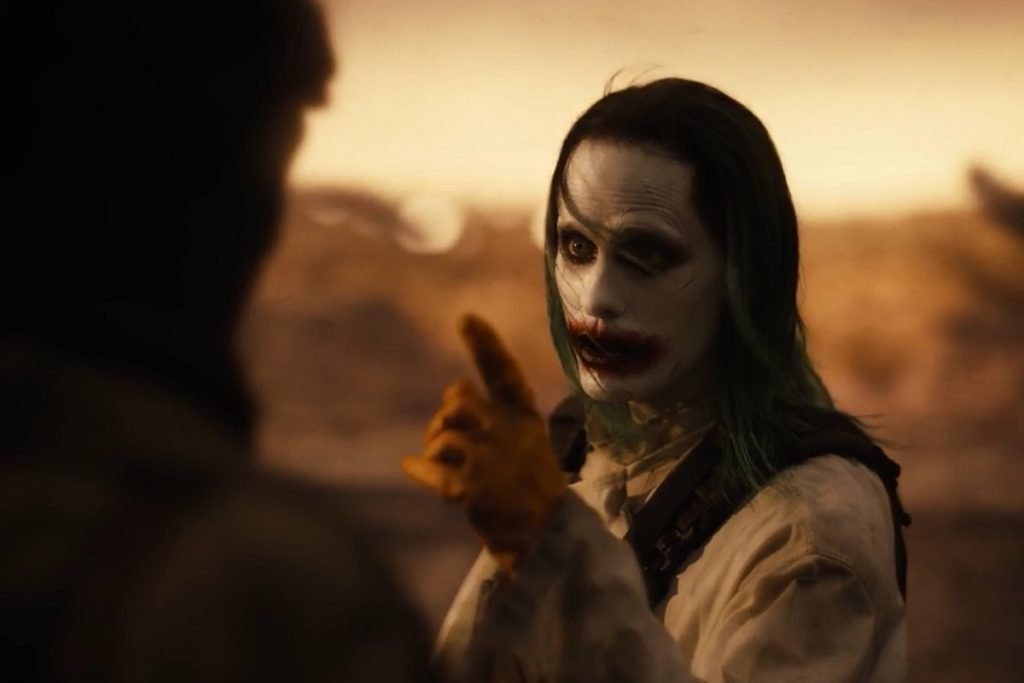
The parting thought the film leaves us with is of a “Knightmare” version of the universe – an alternate reality – wherein Superman has gone full villain and Batman has teamed up with The Joker (Jared Leto, The Little Things), Meera, The Flash, and Deathstroke (Joe Manganiello, Magic Mike XXL) to defeat the Man of Steel. Leaving aside that the scene might be the single weakest in the entire film and that Jared Leto’s Joker is perhaps the worst element of the entire DCEU, Snyder has decided to “close” his trilogy with an acontextual blather. Let me be clear, I don’t care what deep cut knowledge of DC maguffins is required to fully comprehend the scene. As an act of storytelling, the scene is nonsense.
I think it’s the perfect encapsulation for what a strange and masturbatory project this is. I’m happy for the majority of Snyder fans who are perfectly well meaning film nerds who happen to vibe the way he does. I’m glad they got their four hour vanity project – I hope it was everything they had imagined. I cannot escape talking about this movie without mentioning the vitriol that underlies so much of its genesis. For years, internet trolls attacked any work criticizing Snyder or somehow standing out as an “alternative” to Snyder’s universe. They inundated everything, from reviews of unrelated films to announcements around Kobe Bryant’s death, as an excuse to act like pricks. Even now, with their beloved Snyder Cut in hand, they’ve taken to tanking the audiences scores for Godzilla vs. Kong and covering posts relating to anti-Asian violence with #RestoreTheSnyderUniverse tweets. To try to confront my own bias, I might feel better about this film if that element were not rewarded by its existence.
The reality is that the original Justice League is very much a core example of blockbuster studio filmmaking. It’s sort of laughable to me that Whedon gets slagged for the sort of cynical “get it done” moviemaking reshoots that happen all over the industry. The Whedon Cut “is” the first Snyder Cut with the best efforts of a second director to bring it home in line with the studio’s vision – in this case getting the running time under 2 hours and injecting some humor into the mix. We blame Josh Trank for Fantastic Four, but he was long gone when Stephen E. Rivkin was finishing that movie. We credit Gareth Edwards with Rogue One: A Star Wars Story, but it’s Tony Gilroy that brought that project home. Sometimes the credits change to the new director, like Ron Howard on Solo, and sometimes they stay with the originator… like Zack Snyder, here, who remains the lone named director on the theatrical release.
Perhaps the saddest revelation of The Snyder Cut’s release is that it’s not the work of some grand auteur who has flaunted the system to make something amazing. It’s just a movie that reeks of the studio system, and, in the case of Warner Bros, a uniquely flawed studio. The film may be divided into 7 chapters of supposer grandeur, but the end result is nothing more than disappointment. Is this “better” than the theatrical movie? In some ways, sure. Is this a great film? Absolutely not.
Zach Snyder’s Justice League is now available to watch on HBO Max.

